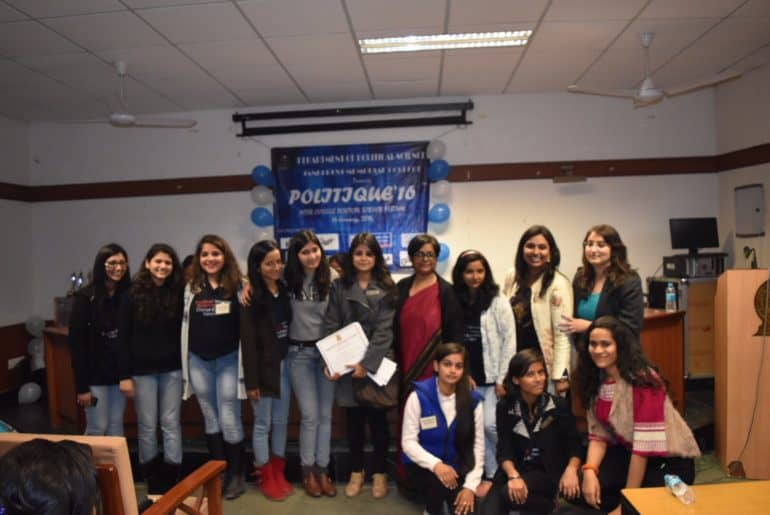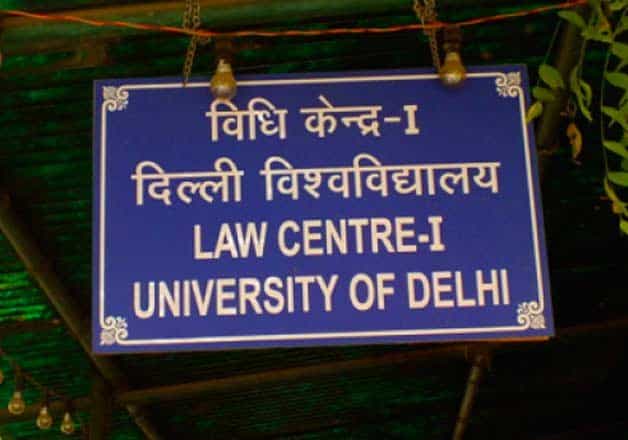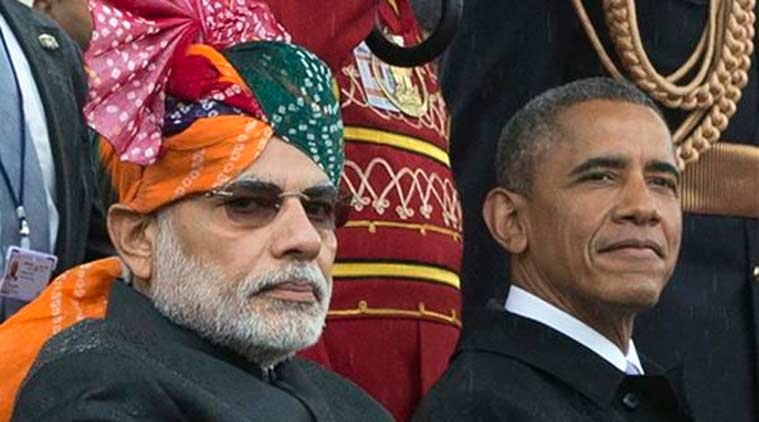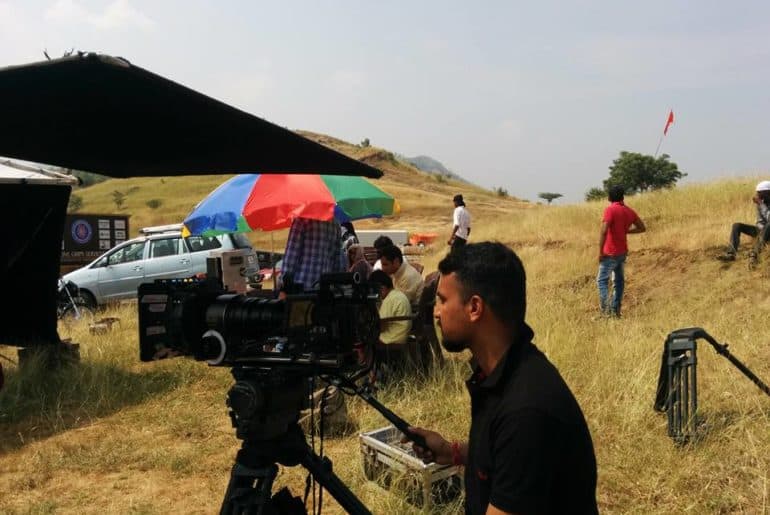
 The seminar was followed by five events. It included:
1. Debate on the topic ‘Age is not a justification to crime. Adult crime demands adult punishment.’
2.Poetry writing- Juvenile Crime: Expressions of young mind
3.Poster & Slogan making
Juvenile Crime: ‘Nature’ or ‘Nurture’
4.Treasure Hunt
5.Quiz Competition.
The event witnessed the participation of a large number of cross-college students due to which the registrations were closed one day before the event only.
The event was finally wrapped up with the closing ceremony in which the winners were awarded with cash prizes and certificates.
It was indeed a learned day with creativity being the tool through which the students expressed their take on the issue of Juvenile Justice.
Guest post by Bhavna Bhardwaj for DU Beat]]>
The seminar was followed by five events. It included:
1. Debate on the topic ‘Age is not a justification to crime. Adult crime demands adult punishment.’
2.Poetry writing- Juvenile Crime: Expressions of young mind
3.Poster & Slogan making
Juvenile Crime: ‘Nature’ or ‘Nurture’
4.Treasure Hunt
5.Quiz Competition.
The event witnessed the participation of a large number of cross-college students due to which the registrations were closed one day before the event only.
The event was finally wrapped up with the closing ceremony in which the winners were awarded with cash prizes and certificates.
It was indeed a learned day with creativity being the tool through which the students expressed their take on the issue of Juvenile Justice.
Guest post by Bhavna Bhardwaj for DU Beat]]>
rd DU Mock Indian Parliament’ kicked off successfully. With the kind of enthusiasm and zeal the delegates, executive board, organizing committee and others carried, the event was sure to be one of the best across the country. The affair proceeded after our honourable chief guest, Mr. Prashant Mendiratta and the members of DUSU ignited the lamp.
With around 135 delegates, Lok Sabha stood as the largest committee at the 3rd DU Mock Indian Parliament, with one of the most interesting agenda of ‘Ram Mandir Reconstruction and Maintenance Bill, 2016’. A heated debate that continued for 2 consecutive days proved totally worth it as the ruling party was able to get the bill into voting and pass it with a few amendments from the opposition’s side.
 Rajya Sabha, with their agenda as the ‘Goods and Services Tax Bill,2016’ had a very subtle and intelligent debate as the delegates were seen discussing the various taxation policies. Interestingly, delegates had prepared diagrams to explain the pros and cons of the bill to the council. But due to a strong opposition that was able to give very many reasons as to why the bill should not be brought in India, the bill remain stuck and was not passed.
‘Review of Reservation Policy’ as their agenda, AIPPM witnessed a very lively debate since the topic is one of the most frequently debated and criticized around the country. Parliamentarians were seen discussing the norms on which the reservations should be allowed. Statements like “reservation should not be religion oriented” were made in the council.
Rajya Sabha, with their agenda as the ‘Goods and Services Tax Bill,2016’ had a very subtle and intelligent debate as the delegates were seen discussing the various taxation policies. Interestingly, delegates had prepared diagrams to explain the pros and cons of the bill to the council. But due to a strong opposition that was able to give very many reasons as to why the bill should not be brought in India, the bill remain stuck and was not passed.
‘Review of Reservation Policy’ as their agenda, AIPPM witnessed a very lively debate since the topic is one of the most frequently debated and criticized around the country. Parliamentarians were seen discussing the norms on which the reservations should be allowed. Statements like “reservation should not be religion oriented” were made in the council.

 The Futuristic Crisis Committee with their agenda as ‘Attack by ISIS on India’ happened to be one of the most interesting committees at the event. From delegates blaming each other for the security of the country to sincerely discussing ways to improve it, the council saw it all. The council saw intelligent yet controversial statements being made.
3rd DUMIP, witnessed a huge success due to all the hard work put in by everyone present at the event especially the organising committee that did not leave any leaf unturned to make sure the delegates had the perfect environment to debate and were not left unsatisfied. When the Indian Press asked the parliamentarians about the event they said that this was one of the best youth parliaments they had ever been to.
Image Credits: Pixels: Photography Society, Hans Raj College
Guest post by Apoorva Sharma for DU Beat.]]>
The Futuristic Crisis Committee with their agenda as ‘Attack by ISIS on India’ happened to be one of the most interesting committees at the event. From delegates blaming each other for the security of the country to sincerely discussing ways to improve it, the council saw it all. The council saw intelligent yet controversial statements being made.
3rd DUMIP, witnessed a huge success due to all the hard work put in by everyone present at the event especially the organising committee that did not leave any leaf unturned to make sure the delegates had the perfect environment to debate and were not left unsatisfied. When the Indian Press asked the parliamentarians about the event they said that this was one of the best youth parliaments they had ever been to.
Image Credits: Pixels: Photography Society, Hans Raj College
Guest post by Apoorva Sharma for DU Beat.]]>
http://duexam2.du.ac.in/RSLT_ND2015/Students/Home.aspx DU Beat wishes all its readers the best of luck for results!]]>
The Bar Council of India (BCI) has issued a show-cause notice to the Faculty of Law, Delhi University, on account of multiple illegalities, including: students exceeding permissible limits, lack of infrastructure and faculty to name a few. The BCI, which is the apex regulatory authority of legal education in the country, had decided in 2014 to de-recognise DU’s law course due to delay in extension of affiliation of its three law centres: Campus Law Centre, Law Centre-I and Law Centre-II.
This notice has come as a fresh trouble for Law Faculty after another inspection by a committee headed by the former Chief Justice of Patna High Court L. Narasimha Reddy. The panel reported that, the Law Faculty had just 20 classrooms instead of 100 for the 5000-plus strength of students it has. With this, it had been functioning with an ad-hoc faculty for the last 15 years. The college also increased its intake by 54 percent, which is considerably higher in comparison to the permissible 27 percent.
“The panel has stated that the Faculty of Law must arrange for 100 classrooms to accommodate the present strength. This apart from other requirements such as library, tutorial rooms, common rooms, moot courts etc.”, said the BCI communication to the University, as reported by The Economic Times.
The Faculty of Law was granted provisional extension of affiliation in 2014 when DU had proposed to shift to a new building which it claimed had adequate space for the faculty to run properly. However, with the illegalities left un-amended, the Law Faculty has been demanded to come up with quick action to keep the credibility of its course intact.
Image Credits: www.indiatvnews.com
Arushi Pathak
[email protected]
2015 proved to be ‘just another year’ for the capital city of the country. However huge the political debacles in the first couple of months were, thanks to the Assembly Elections; the year turned out to be more or less a mundane one. Promises were left as mere promises and the dream of a Delhi with free WiFi, Water and Electricity stayed as bleak as before. While there were very tiny positive developments, the year was a stable one also because of lesser negative controversies in comparison to the days done by. Here’s a glimpse of all that brought Delhi in the headlines this year:
1. 66th Republic Day with Mr. Barack Obama: The Rajpath saw a multitude of people gathering on the chilly morning of 26th January, 2015, the republic day celebrations; the highlight of which weren’t the impeccable march pasts or processions but the presence of the President of U.S.A Mr. Barack Obama. President Obama and the First Lady also attended all the formal ceremonies, which was argued to hint at better diplomatic relations between India and the U.S.
Further Reading: Places that Mr. President should’ve visited according to DU Beat
Barack Obama attending the Republic Day Parade at Rajpath | Source: indianexpress.com
2. AAP in power again with 67/70 seats: Second chances were given, not just marginally but with a whooping, incomparable majority to Arvind Kejriwal and the Aam Aadmi Party. 14th February, 2015 turned out to be a milestone for both Kejriwal and AAP, when the result-tabs board showed 67 out of 70 seats in the domain of the party. The same day came as a big blow to the unbreakable chain of wins for the Bhartiya Janta Party (BJP) which was reduced to a minor 3 seat arena. Free WiFi, subsidized electricity and water were the most ‘attractive’ promises of the campaign.
Further Reading: Curious Case of Delhi Elections
Also read: Changes to be introduced in DU education system by AAP Govt (as predicted by DU Beat)
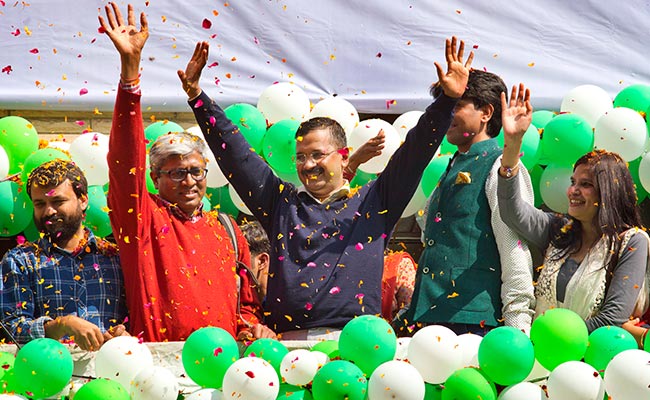
3. Violet Line connects Faridabad to NCR: Delhi Metro expanded its chains to Faridabad, the inauguration of which was done by the Prime Minister Mr. Narendra Modi on 6th September, 2015. The extension of the Violet Line of Delhi Metro from Badarpur Metro Station to Escorts Mujesar in Faridabad added 9 stations. The Violet Line now connects ITO to Faridabad.
4. “Four-Fold increase in salaries of MLAs of Delhi”, approves AAP Government: Whether basic amenities will ever be free and sanitation will ever be ensured is ambiguous, but the AAP Government was sure to work for the welfare of the MLAs by ensuring a 400% hike in their salaries. The proposal was approved in a Cabinet Meeting chaired by CM Arvind Kejriwal by passing the Members of the Legislative Assembly of the Government of NCT of Delhi (Salaries, Allowances, Pension) Amendment Bill 2015 on 27th November, 2015. The bill has now been sent to The Ministry of Home Affairs for approval.
5. Odd-Even Rule coming from WHO declaring Delhi the most polluted city of the globe: All hell broke loose in May 2014, and rightly so, when the World Health Organisation (WHO) declared Delhi the most polluted city of the world. Pollution levels in Delhi have been standing constant at alarming rates since the past five years. Kejriwal government was inspired by the Chinese experiment of the Odd-Even Traffic Rule, and proposed to follow the same in Delhi in early December. Alternate days shall be allotted for odd numbered and even numbered cars as per the rule, which was criticised and supported by stakeholders alike (Though the former was way more apparent than the latter!). Only time will tell the success of this revolution of traffic rules in Delhi.
Further Reading: Bazinga – DU students exempted from the odd-even rule

6. AAP’s Cleanliness Mobile App launched: Keeping all rivalry and tension with the PM Narendra Modi aside, the AAP government proved itself to be a concrete supporter and promoter of the ‘Swacch Bharat Abhiyan’ by launching the Clean Delhi Mobile App on 17th November, 2015. The app lets one capture an image of ill-sanitary conditions in any area and the government, after locating the place, promises to get it cleaned up at the earliest. This initiative was widely appreciated and has seen a slow but positive response from the citizens.
7. Car-Free Day to be observed on 22nd of every month: This initiative started on October 22nd, 2015 as an attempt to manage the alarming pollution levels of the city. Residents observed the Car-Free Day by participating in cycle-rallies and taking public transport to work. A study released by Center of Science and Environment (CSE) reported as sharp as 60% decline in Delhi’s Air Pollution on October 22nd and the initiative was widely supported by Delhi-ites.
8. Juvenile convicted in Delhi’s Gang-rape Case of 2012 released: While activists, the victim’s parents, even certain politicians kept pleading against the release, the juvenile convicted in the 2012 Delhi Gang-rape case was released precisely after three years from the incident on 20th December, 2015. He was reportedly sent to an NGO for ‘mental reformation and rehabilitation’. Arguably as one of the most heinous incidents that shook the nation, the 2012 Gang-rape case sparked an uncontrollable fire of demand for justice to Jyoti Singh, who eventually succumbed to her wounds.
Jyoti’s father, Badrinath, commented, “It’s all politics that’s happening, and not justice.” He couldn’t be more accurate to analyse the event. The Judiciary in India reached an all time low with this judgement which was passed in less than a month of clearance of all charges against Salman Khan in the 2002 Hit-and-Run Case. Do we still have reasons to believe that the Indian Judiciary is unbiased and advocates justice? Or is it time to re-think what the Constitution of India promises?
After intense debate, the #juvenilejusticebill has been passed by the Rajya Sabha. While it isn’t possible to charge the #Nirbhaya rapist under this law, do you think it will work as a deterrent in the future?
Posted by DU Beat on Tuesday, December 22, 2015
Arushi Pathak
[email protected]
“Almost everybody in this world can’t bear to see the other person being better than him.” It’s in these short sentences that she makes the reader relate to her life. “…as he grew older, his Christmas list got smaller and the things he really wanted could no longer be bought.” Keith and Avantika’s story is offbeat and chooses to break multiple norms; it’s unfazed and fearless. One would simply keep on reading to know what the newly-find solace in Avantika’s life shall turn out to be like. The end, though, will make you question if life is fair to everyone, after all! Image Credits: stylanzo.com Arushi Pathak [email protected]]]>
The debate about whether Indrani Mukherji killed Sheena Bora after all is of utmost importance to every Indian news viewer. Because the fact that hundreds are left homeless in Assam floods is certainly tragic but won’t get you enough TRPs. Whether Lalu Prasad Yadav is the best ‘tantrik’ of the country or not is something every ordinary Indian; with or without a home, with or without a job; is concerned with. Because a research project for agriculture approved by the central government that will most definitely create new jobs is not sensational enough.
Credits: kscribe-kalpanasharma.blogspot.com
While every news channel today competes to give the best and most ‘unbiased’ news, with a self-proclaimed best news channel tag on itself; actual news, covering all aspects of events: good or bad, is a rare sight. The problem most vivid with the trend of Indian media today is that it fails to (whether deliberately or not) go beyond the ambit of myopic and sensational events which guarantee more TRPs for the channels. Hence the growing problem of ISIS takes a backseat, while Shahid Kapoor’s wedding is pushed to top breaking news.
The absurdity of media’s focus is not just within these limits. When reporters ‘sympathetically’ ask the family members of two girls who were raped and hanged from a tree as to how they’re feeling, the emotional-captialising trait of the very same media shines bright. And all that’s left to see is a panel of ‘distinguished’ speakers, talking about (I dare not say screaming about) how to fix this at the end of the day. But the question is, does something substantial come out of this top trending hash-tagged news hour debate? Is the problem, after an hour of piercing decibel levels, solved after all?
Credits: hindustanmedia.in
The political opinions, which would either be ‘All Hail RSS!’ or ‘Liberal, Secular, Communist and Proud’ are skewed towards one side so dexterously that the idea, under the shroud of unbiasedness is actually biased. So when a bakery offers you just one cake, how do you choose which one suits your taste? Furthermore, how do you figure out there exists a better cake?
When was the last time you read positive news breaking the headlines? The last space exploration program, maybe? So is India functioning only on the foundation of negativity and futile events that aren’t worth thirty-minute programs? Of course, news about rapes and murders is essential for awareness. But the problem is that media doesn’t stop at just awareness. It takes it to sensationalism and then to exploitation. And this breaking news, which will be shoved the television screens for at least fifteen days, would make sure to let any event crawl up to the top. Is that what accurate, authentic and unbiased news about?
Credits: curiousindian.com
This idea of sensationalism is simple. Capturing victims in their vulnerable moments, capturing politicians commenting on these vulnerable moments, capturing opposition countering these comments- the chain is infinite.
Till when can we stay entangled within the web of what Alia Bhatt said at her movie promotion or what Prime Minister Narendra Modi has for lunch, and dinner, and breakfast or how a fan fell on Lalu Prasad Yadav during a rally? Till when are we willing to be cordoned off from world affairs? Not knowing about US Elections or Arab protests or Lebanon attacks or South-east Asia’s innovative researches? And is this a chance we’re willing to take infinitely?
Featured Image Credits: lilainteractions.in
Arushi Pathak
[email protected]
Bajirao Mastani is everything a Sanjay Leela Bhansali movie can be about: Magnificent sets; elaborate costumes, showcasing Anju Modi at her best and larger than life but a little weak drama. While it was unarguably one of the best performances of the leading actors- Ranveer Singh, Deepika Padukone and Priyanka Chopra, Bajirao Mastani was left short of being a historical epic primarily because of a not-so-concrete plot-line.
The smartly-crafted disclaimer right before the beginning of the film well-embraced the liberties the director Bhansali took with historical facts about the Maratha peshwa Bajirao Ballad, much to the disappointment of many historians. The central love-tale between peshwa Bajirao (Ranveer Singh) and the half-Rajput, half-Muslim princess of Bundelkhand, Mastani (Deepika Padukone) was vivid but only in bits and pieces amidst politics and grandeur. The dialogues and dance sequences were certainly spectacular, meeting all expectations from a Bhansali movie. At the same time, however, certain sequences had little relevance like the song ‘Pinga’ which stuck as a misfit could have been just done away with.
The first half of the film is a slowly running plot, leaving the spectators languor and curious for what awaits at the same time. The art of the film lies in its cinematography where battle sequences are shot intricately to bring out the Maratha zest and valour. In the second half, the movie picks up pace focusing almost equally on the politics of battle; the love and longing of the first wife, Kashibai (Priyanka Chopra) and the face-off between faith, love and societal norms.
All stars to the actors on-screen; where Ranveer Singh has pulled off exceptionally, the gallant Bajirao whose love for Mastani is esoteric and Deepika Padukone’s dual role of a female warrior loyal to her state and later to that of an intoxicated lover and devoted mother kept the strings of the film strong in her hands. Priyanka Chopra’s role in the first half is limited where she comes and goes off screen without much substance. It’s in the second half when her portrayal of longing and bitter loss of her partner to another woman takes the limelight and leaves an impression behind. The supporting cast added adequately to the mood of the film- Tanvi Azmi’s role of Bajirao’s widowed mother and Milind Soman’s role of Bajirao’s adviser Ambaji Panth certainly stood out.
Simply put, sharing the screen space with the wife and the mistress in the first half and later making the choice between love and duty, it’s Ranveer Singh’s film. The alluring sets of ‘Shanivarada’ and Mughal-e-Azam fame ‘Aaina Mahal’ give the movie an edge of detail and romance. Bhansali’s music suffices the opulence of the film. One would sit till the end only to know the fate of the devoted love of Bajirao and Mastani. Though the message stands relevant today: Love knows no religion. Whether love is a religion itself, however, is a subject to relativity and interpretation!
Featured Image Credits: newsmobile.in
Arushi Pathak
[email protected]
At some point or the other in our education, we all wish to widen our horizons of reach and go to foreign countries which provide better learning opportunities. But what matters the most in an application to a foreign university, what is the correct time to start looking for applications… these basic questions are the trickiest of all. What better way than to contact a person who has gone through the grindstone himself? Read on excerpts from an interview with Mr. Dhanasekar (who is going to pursue M.S. Programme in Arizona State University in Fall, 2016) , as he opens up about how he prepared himself for the application.
Ques: Tell us about your undergraduate education {for example, from which college you graduated, your course, etc.}.
Dhanasekar: I did my Mechanical Engineering from NIT Karnataka. It was a great college. In college, what matters more is the level of students who are groomed; this is what which broadens your level of thinking. Elite colleges outstand for this very reason.
Ques: What do you think matters most in an application to a foreign university?
Dhanasekar: Your application should be your reflection of educational and career background. When you are applying for Masters, you will be specializing in a particular field. First determine your field of interest and make a list of colleges and professors who are pioneers in that field. There are thousands of universities across globe, choose only those few universities based on research activity on the specified field. If you have a right background on the field and few supporting docs on your capability, then getting an admit is quite easy. The supporting document might include your GRE, TOEFL, or Undergraduate GPA..
Ques: You were offered seats in both Arizona State University and the University of Michigan Ann Arbor. Any specific reason for choosing the former over the latter?
Dhanasekar: Arizona State University (ASU) is one of the largest public university in the US with diverse streams. It is ranked No. 1 in innovation. Michigan Ann Arbor is one among Top Ranked universities across globe. I choose former because of the right mixture of Professor and research field.
Ques: How did you prepare yourself for the application to the programme?
Dhanasekar: Preparing your college application shall not be difficult if you have a clear focus on your research goals. You just have to build a simple statement of purpose to deliver your background. My advice is to be specific on point which you think the admission committee shall know about you – to consider giving an admit. Do not have irrelevant and elaborate stories, it will immediately mar the interest the reader.
Image Credits: Mr. Dhanasekar’s Facebook Profile

